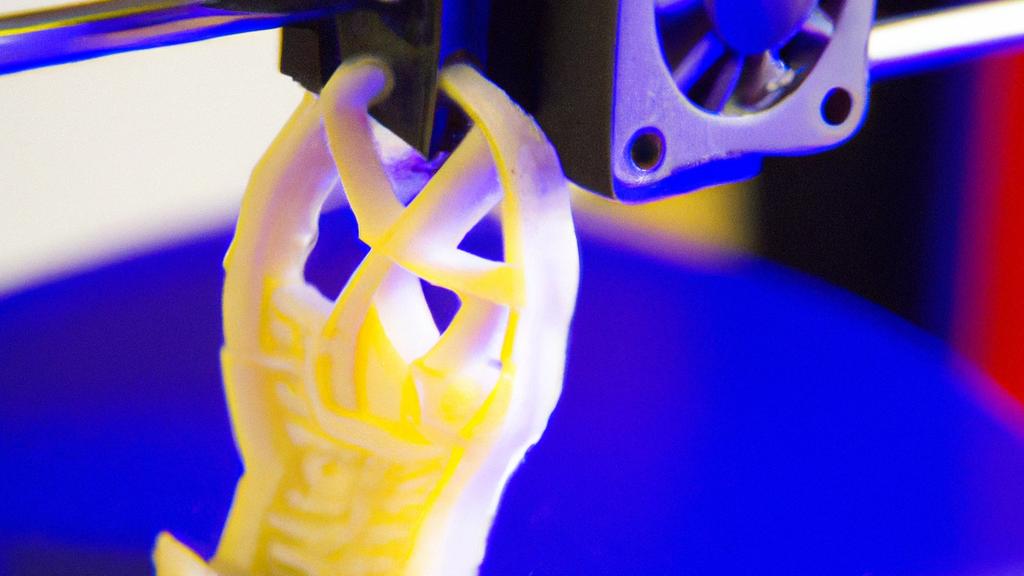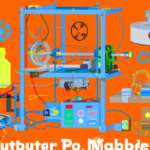
Introduction: The growing popularity of 3D printing and its impact on society
3D printing technology has revolutionized the way we make things. From prosthetic limbs to building prototypes, 3D printing is making life easier and more accessible. The technology has also enabled people to create a wide array of objects, including fictional weapons. Some people are taking designs from movies and video games and are 3d printing fictional weapons.
This is a fascinating development that displays the promises and potential of 3D printing technology. However, it also raises valid ethical, legal, and safety questions. As we continue to explore the possibilities of this technology, it’s essential to take a closer look at 3D printing fictional weapons, and the implications of such creations in society.
This article will examine the bridge between fiction and reality and the role of 3D printing technology in this process. We will explore the growth of 3D printing and the nature of fictional weapons before highlighting the ethical concerns and legal implications of creating 3D printed weapons. Finally, we will look into the future of 3D printing and its role in society as a whole.
The bridge between fiction and reality: An overview of fictional weapons and 3D printing technology
Fictional weapons have always been a source of fascination for many people. From lightsabers to plasma rifles, the weapons that we see in movies, TV shows, video games, and books have always been a popular theme. With 3D printing technology, we can turn some of these fictional weapons into a reality.
The process of creating fictional weapons using 3D printing involves designing the objects on a computer, with specialized software like AutoCAD or Blender. After designing, the 3D models are loaded into a 3D printer, which prints out the final version of the weapon. The result is a physical object that was once nothing more than an idea in someone’s head.
One of the exciting aspects of 3D printing fictional weapons is the level of detail that can be achieved. Designers can create intricate designs, down to the smallest details, making the final product look and feel like the real thing. With this technology, we can create replicas of famous fictional weapons like Iron Man’s suit or Game of Thrones’ swords.
The ability to create fictional weapons through 3D printing opens up many possibilities in the world of cosplay, collecting, and even filmmaking. However, this technology raises valid ethical concerns, and we will examine them in the next section.
The ethical concerns: The potential dangers and risks of 3D printing fictional weapons
While creating fictional weapons using 3D printing technology is an exciting prospect, it raises valid ethical concerns. One of the most significant concerns is the potential danger these weapons pose to individuals and societies.
3D printed weapons are substantially unregulated and can be made without serial numbers or other tracking information that traditional weapons have. This makes it difficult for law enforcement and government bodies to monitor and control the proliferation of these weapons. Furthermore, it is relatively easy to modify 3D printed weapons to make them more severe or more lethal.
Another concern is that 3D printing technology allows individuals to replicate weapons without needing specialist knowledge. This means that people without proper training can produce weapons that pose a danger to themselves and those around them. These weapons could malfunction, misfire, or cause unintended harm, leading to accidents or acts of violence.
The potential misuse and abuse of 3D printed weapons also raises ethical concerns. Some people may use these weapons for malicious purposes, posing a significant risk to public safety. Furthermore, the creation of these weapons could normalize violence, desensitizing people to the dangers of using and abusing weapons.
In conclusion, while 3D printing technology has opened up new possibilities in creating fictional weapons, we must put in place safeguards to prevent potential harm. The ethical concerns raised about the creation of these weapons should not be taken lightly, and we must address them in a responsible and proactive manner.
The legal implications: The role of law enforcement and government in regulating 3D printing technology
The legal implications of 3D printing fictional weapons are also worth considering. With the proliferation of these weapons, regulators and law enforcement agencies have shown increasing concern about the inadequacy of current legislation to deal with the issue.
One significant challenge is that current regulations are not designed to deal with 3D printed weapons. Many gun control laws regulate the manufacture and sale of traditional guns but do not cover 3D printed firearms. This loophole has led to the rise of so-called “ghost guns” – untraceable weapons that are difficult for law enforcement to track.
The ease of access to the 3D printing technology needed to create weapons makes it difficult to regulate the market. There are no background checks, licensing requirements, or other checks despite these weapons presenting clear threats to public safety.
There are also issues related to intellectual property. With easy access to suitable 3D designs, it’s possible to make copies of copyrighted weapons without permission. This raises serious concerns about the ownership of intellectual property rights and the potential for financial loss to creators.
Overall, with 3D printing fictional weapons, legal frameworks and regulatory structures need to be re-evaluated and updated to address the challenges posed by this new technology. The rise of untraceable and easy-to-create weapons presents a risk to public safety and society as a whole, highlighting the need to act swiftly to prevent any potential harm.
Conclusion: The future of 3D printing technology and its influence on society
As we look to the future, the potential uses of 3D printing technology are limitless. With advancements in the technology and software, it’s possible that 3D printing could allow us to create more complex and durable objects in the future.
However, society must now grapple with the implications of the easy availability of 3D printed fictional weapons. While the creation of these weapons offers an exciting new frontier in weapon design and innovation, we must take steps to ensure public safety and minimize unintended harm.
Regulators must act to ensure adequate legislation and oversight of this technology, while designers, manufacturers, and distributors must act responsibility to ensure that their products do not pose risks to individuals or society.
More research is needed to understand the impact of 3D printed weapons on both individuals and on society. We must explore ethical and moral principles related to the creation of these weapons and their potential for misuse or abuse. It’s vital to strike a balance between freedom of expression and the right to public safety.
In conclusion, 3D printing technology presents us with exciting opportunities to create a wide variety of objects, including fictional weapons. However, we must approach this technology with caution, recognizing the potential risks it poses and developing strategies to maximize the benefits while minimizing any potential downsides. As with any new technology, we need to carefully consider the implications for society as a whole.





